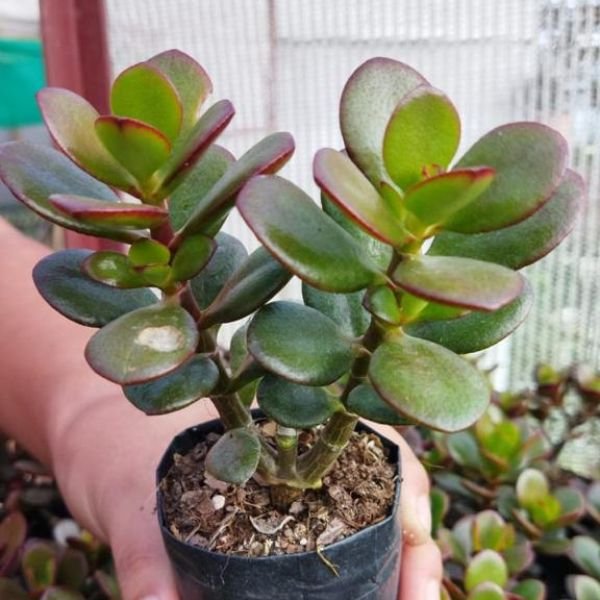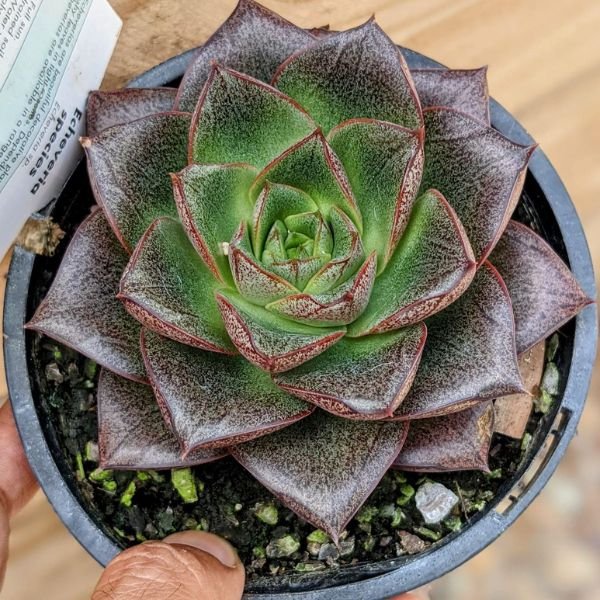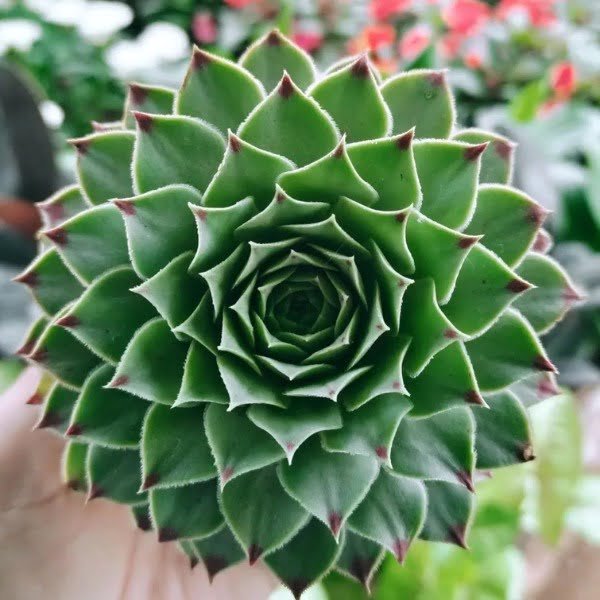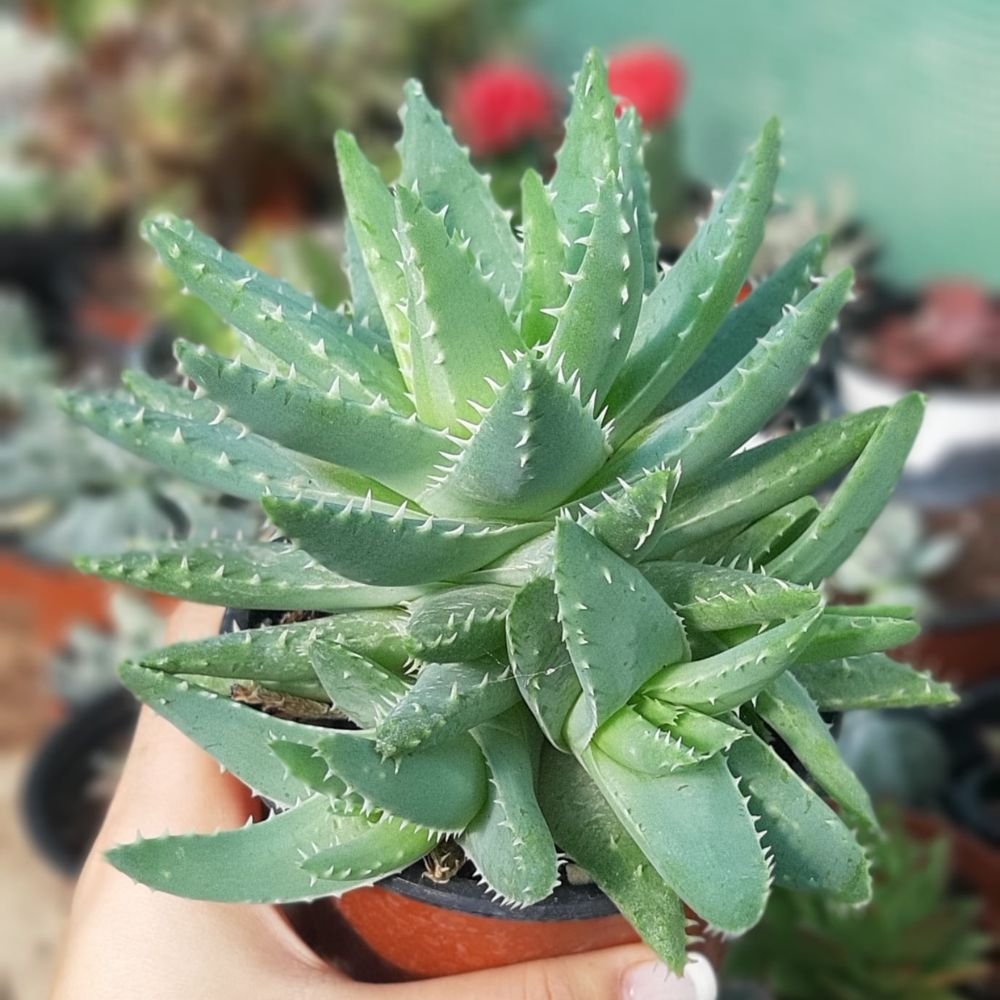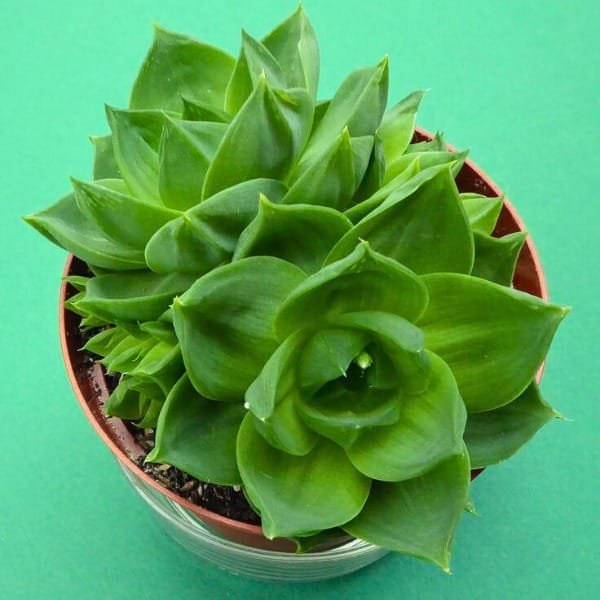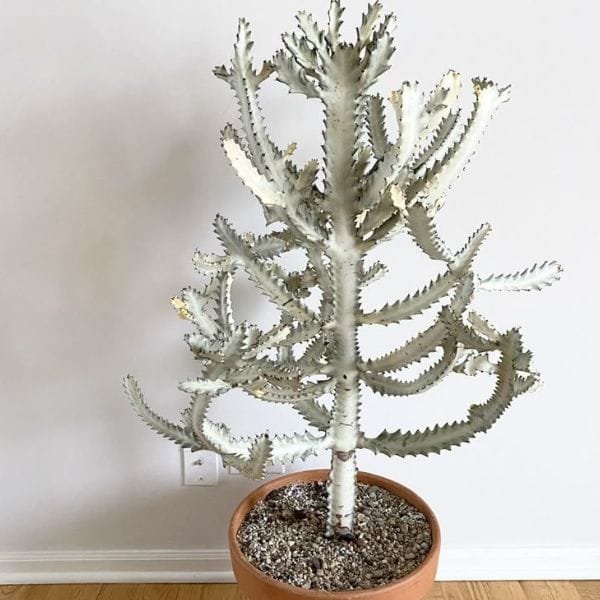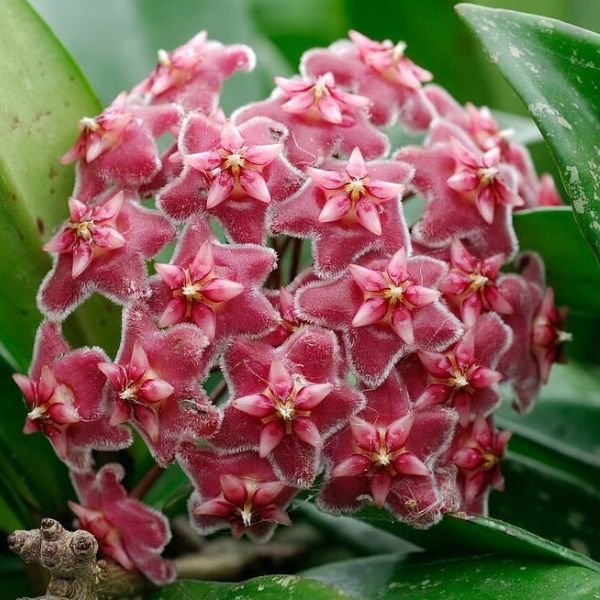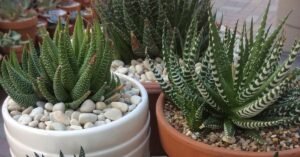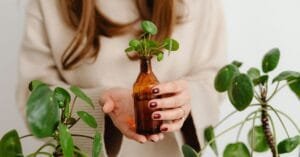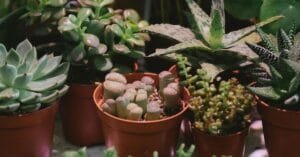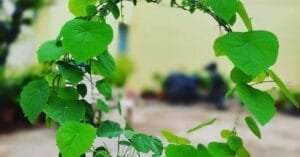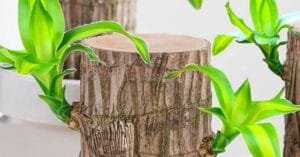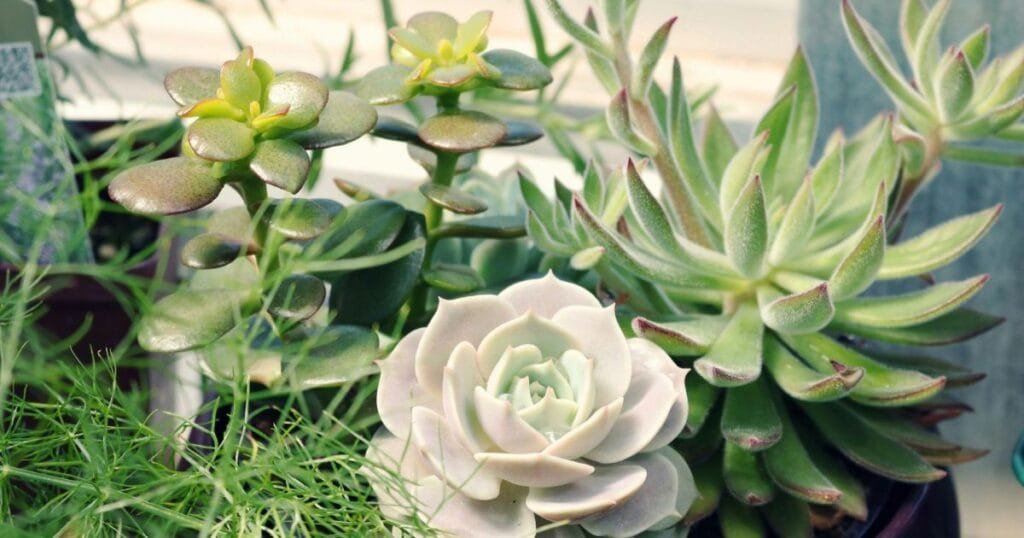
Are you looking for some indoor plant options for your home and offices? If yes, we suggest you try out succulent plants. Succulents are amazing indoor plants that require limited care and attention. They are so self-reliant that they can take care of themselves for a few days. They are originally from deserted regions. Thus, giving them a good and strong root system to keep them hydrated for a longer period.
Succulent plants are capable of storing water and that water is used to keep them fresh and healthy. They have a unique appearance that makes them distinctive from other indoor plants. You should surely give this ornamental plant a chance to beautify your space.
Exclusive Options for Indoor Succulent Plants
Succulent plants have lately become the houseplanters’ favorites. Their self-reliable quality is a top-notch pointer that can not be ignored. They are so easy to handle that you will be amazed to have one. Below are a few amazing succulent plants that go well in the Indian climate.
Jade or Dollar Plant
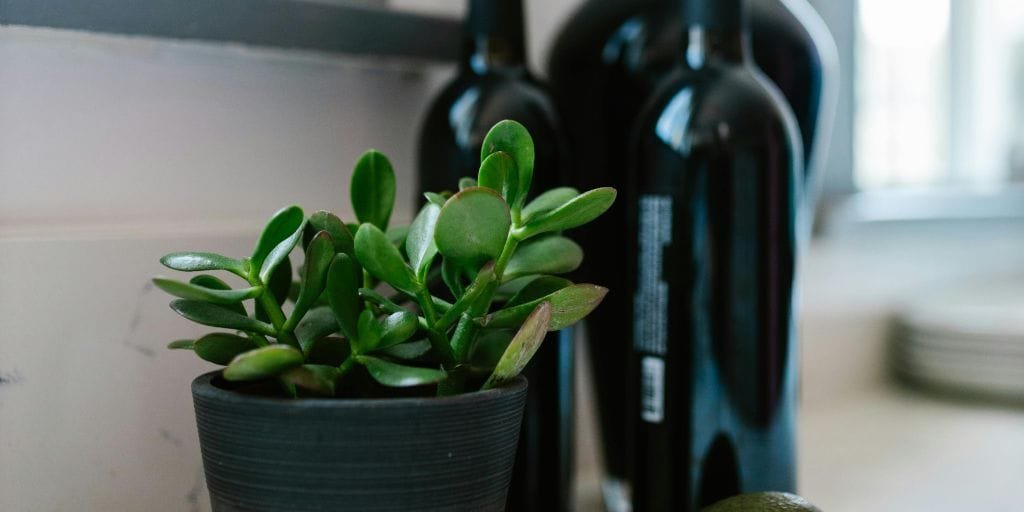
From the Crassulaceae family, the Jade plant is quite a loved one. The other names of it are dollar plant, lucky plant, money plant, or money tree. It is a demanding indoor plant because popular theory of attracting goodness. With great importance in the world of Feng Shui, it can bring positivity and good luck. With its coin-like shape, it is the main reason for it to be auspicious for everyone. The leaves signify money attraction.
- Scientific Name: Crassula Ovata
- Native: Eastern Cape regions of South Africa, KwaZulu-Natal, and Mozambique
- Ideal Temperature: 18–24°C during the day and 13–16°C during the night
- Average Size: 3 to 6 feet tall
- Sunlight: Mixer of direct and indirect sunlight at 4 hours a day
- Watering: In a gap of 2-3 weeks
Dollar Plant
The Dollar Plant, known for its lush, round green leaves, is easy to grow indoors. It brings a fresh look to any space and is thought to attract wealth and good fortune. Low-maintenance and stylish.
Red Tip Crassula
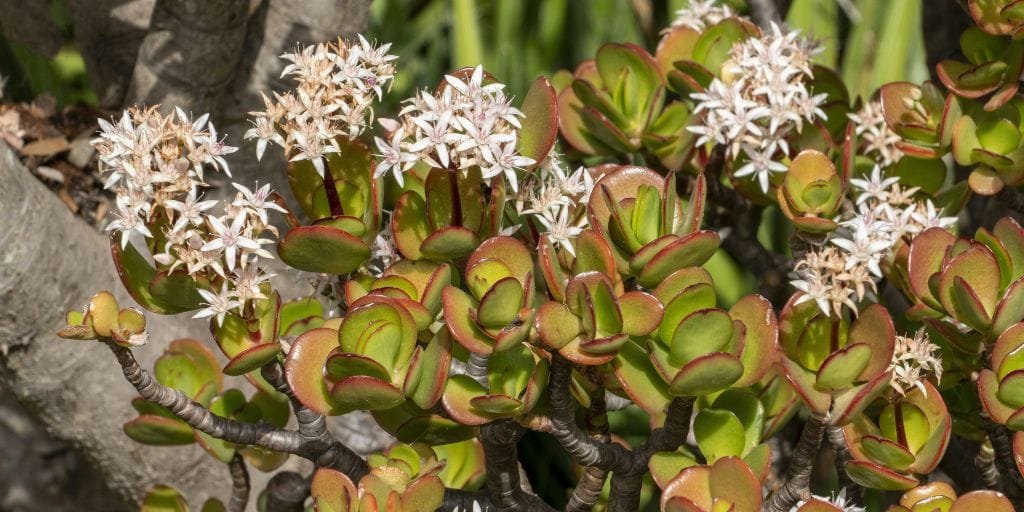
Red Tip Crassula is a perfect indoor as well as outdoor planter for your home. A hint of red color on the tips of the rosette-shaped leaves is a truly eye-catching feature. Being a part of succulent plants, Red Tip Crassula can thrive in any climate with ease. A haze of bright indirect sunlight welcomes a healthy plant. Being a compact planter you can place it near a window or on top of a desk or shelf.
- Scientific Name: Crassula Ovata Obliqua “California Red Tip”
- Native: South Africa
- Ideal Temperature: 18–24°C
- Average Size: 2 to 9 feet tall and 2 to 5 feet wide
- Sunlight: Full sunlight with some blockage
- Watering: Once every 12 to 15 days
Red Tip Crassula
Introducing the charming Red Tip Crassula, a delightful succulent that brings a pop of color to any setting. With its vibrant red-tipped leaves and compact form, this plant is a true eye-catcher. The Red Tip Crassula is perfect for both indoor and outdoor spaces, thriving in bright light and well-drained soil. Its low maintenance needs make it a great choice for plant lovers of all levels. Whether placed on a desk, a windowsill, or in a succulent arrangement, this captivating succulent will bring beauty and joy to any environment.
Echeveria Purpusorum
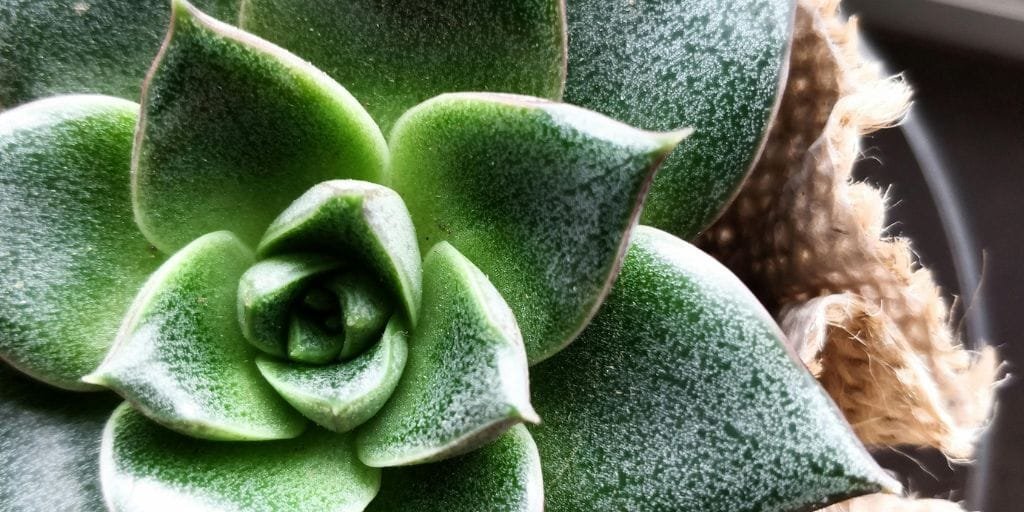
Echeveria Purpusorum has a similar appearance to the lotus plant. The plant is not related to the lotus plant, but the appearance of the bluish-green leaves is similar to it. Being a part of a succulent plant it can thrive in any climatic condition with ease. With little time to time, care is enough for the plant to survive. Purpusorum is a flowering plant that blooms scarlet red flowers with yellow tips.
- Scientific Name: Echeveria Purpusorum
- Native: Mexico, and Puebla and Oaxaca
- Ideal Temperature: 16–27°C
- Average Size: 3 inches tall
- Sunlight: Preferably partial sunlight
- Watering: Alternate 12 days
Echeveria Purpusorum
Introducing the exquisite Echeveria Purpusorum, a captivating succulent that will add a touch of elegance to any space. With its compact rosette of deep green leaves, adorned with unique reddish-brown markings, this plant is a true stunner. The Echeveria Purpusorum is perfect for both indoor and outdoor settings, thriving in bright sunlight and well-drained soil. Its low-maintenance nature makes it an ideal choice for busy plant enthusiasts. Whether placed on a windowsill, in a garden, or as part of a succulent arrangement, this striking succulent is sure to be a standout feature and bring joy to any plant lover.
Out of stock
Laxmi Kamal
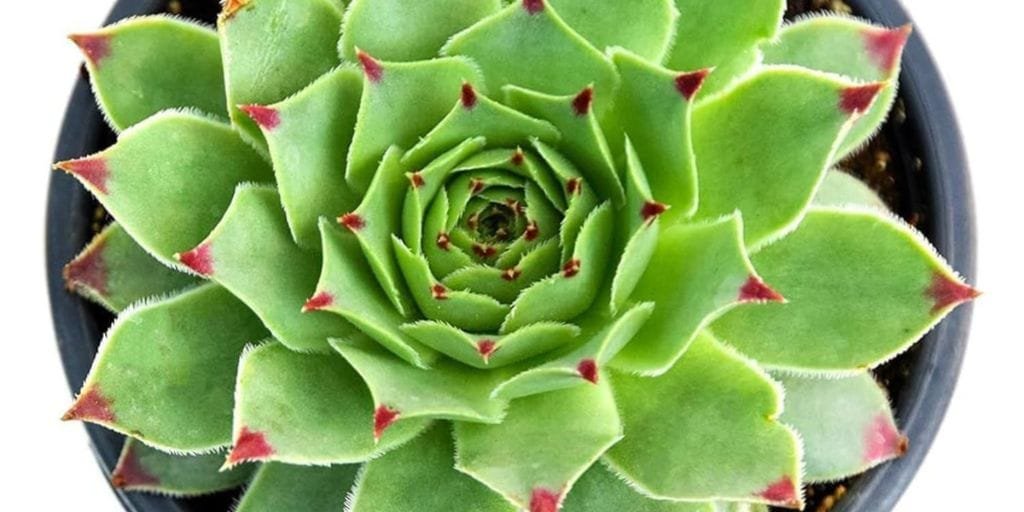
Laxmi Kamal is a unique-looking succulent that caught the attention of indoor planters. Its captivating appearance will make you feel delighted. Even its importance according to Feng Shui also resembles its popularity. One of the symbolic features of Laxmi Kamal is related to the Indian Culture. It resonates with the goddess Lakshmi who symbolizes wealth and positive energy. These succulent plants are great to handle. It can effortlessly settle down in a limited spacing. Indeed, it is a great option for indoor plants.
- Scientific Name: Sempervivum tectorum
- Native: Semi-deserted regions like Mexico, Central America, and northwestern regions of South America
- Ideal Temperature: 15–24°C
- Average Size: 18 to 24 inches in height and 3 to 5 feet in width
- Sunlight: Indirect sunlight
- Watering: Once a week
Laxmi Kamal Plant
The Laxmi Kamal plant is a compact, easy-to-care succulent known for its rosette-shaped leaves and ability to thrive in dry conditions. Perfect for indoor decor or small spaces, it brings a touch of nature and positivity to any setting.
Tiger Jaw Plant
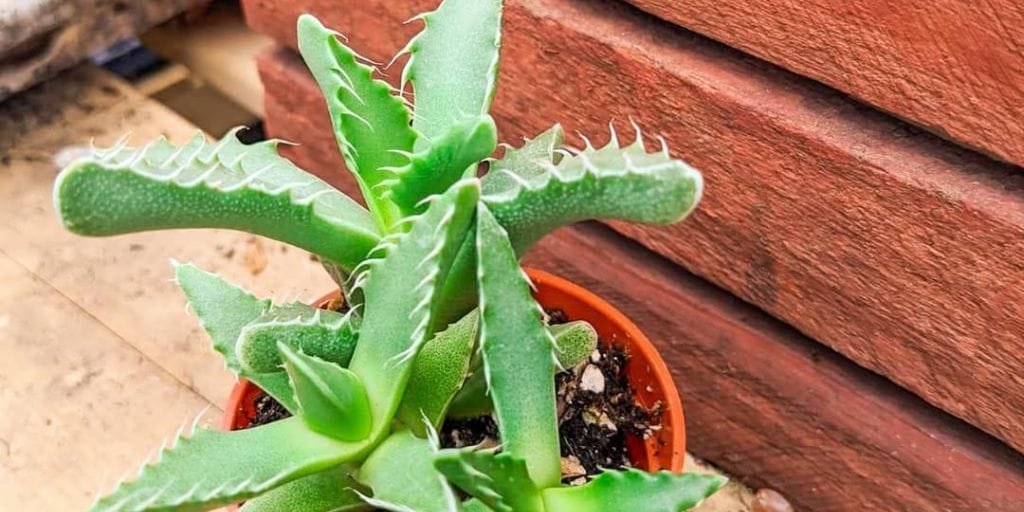
Tiger Jaw is a fleshy thick succulent plant that has a unique appearance. The triangular leaves of Tiger Jaw plants are comparable to a tiger’s jaw. Thus, perfecting justifying having the name for it. This low-maintenance succulent is a great ornamental plant for home and office premises. The spikes on it are harmless and have a soft texture. Being a great option even in a household with children and pets. During the fall and early winter, we can also witness beautiful yellow color flowers.
- Scientific Name: Faucaria Tigrina
- Native: South Africa
- Ideal Temperature: 21 to 32 °C
- Average Size: 4 to 6 inches in height and spreads up to a width of 6 inches
- Sunlight: Full sunlight with partial covering
- Watering: Every alternate 7 to 8 days
Tiger Jaw Succulent Plant
Tiger Jaw succulent thrives in the sun with spikey leaves & blooms yellow flowers. order now
Aloe Vera
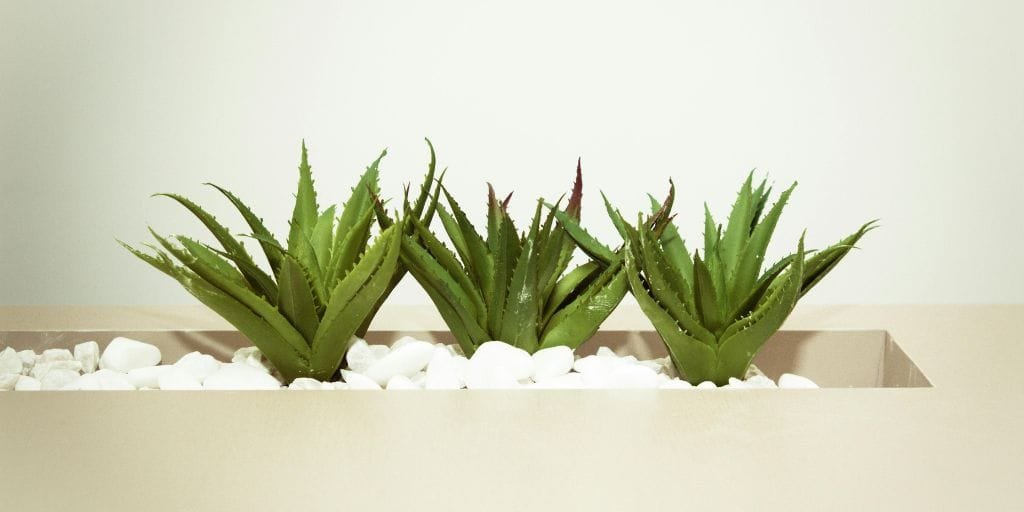
We are all aware of the benefits of the aloe vera plant. These succulent plants are great indoor and outdoor plants. Aloe helps purify the air. Having aloe indoors charges your home with good energy. It may seem like a cactus plant, as it has the same habitat. It can thrive effortlessly in hot and dry climates. Even some variants of Aloe vera are edible and carry medicinal properties.
- Scientific Name: Aloe Vera
- Native: Arabian Peninsula
- Ideal Temperature: 13 to 27°C
- Average Size: 1 to 2 ft tall and 2-3 ft wide
- Sunlight: 6 hours of bright sunlight daily
- Watering: During summer once a week and in winter every 2 weeks
Aloe Brevifolia
Aloe Brevifolia is a striking succulent that’s sure to captivate your senses. It produces several suckers to create cluster-looking rosettes, making it ideal for creating large. It’s special with its triangular light green leaves adorned with white-toothed edges. Come late spring, its reddish-orange flowers, are beautifully complemented by large bracts that extend almost to the base. One of the defining characteristics of Aloe Brevifolia is its slow growth rate but this growing pattern allows it to form large clumps, creating a stunning focal point in any setting. Aloe Brevifolia’s tubular-shaped flowers come in varying shades of red and yellow.
Haworthia Planifolia
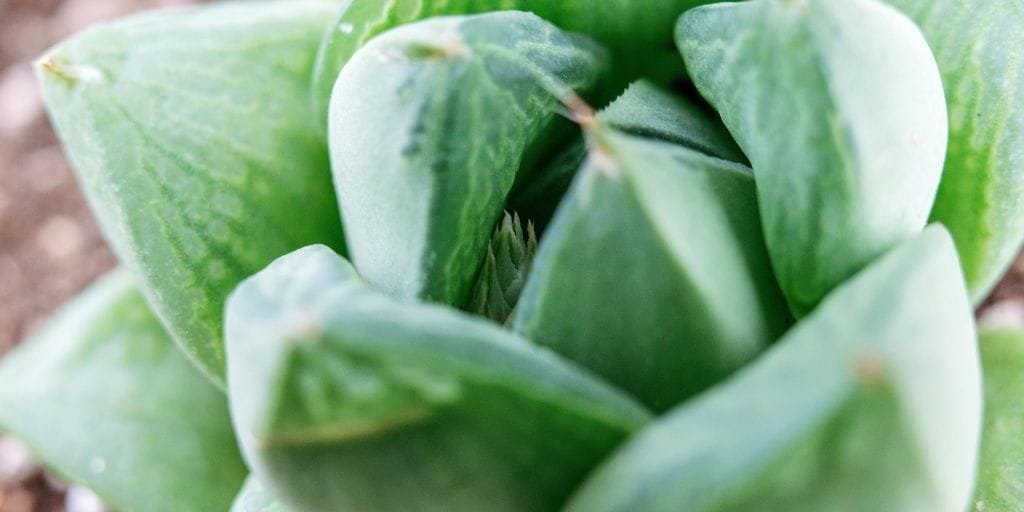
Haworthia Planifolia is a variant of plant that comes from the family of the genus Haworthia. This is a compact indoor plant that needs little care for its survival. The fleshy lime-green color leaves help to purify the air. Haworthia Planifolia loves sunlight in some partial shade. It is a great plant for new plant parents.
- Scientific Name: Haworthia cymbiformis
- Native: Regions of Southern Africa like Namibia, Lesotho, Eswatini, Mozambique, and South Africa
- Ideal Temperature: 20 to 25°C
- Average Size: 3 to 5 inches in height and width
- Sunlight: Indirect Light
- Watering: Every alternative week
Haworthia Planifolia
Haworthia Planifolia is a succulent plant with striking, lime green leaves that are arranged in a rosette. The leaves are translucent, allowing light to pass through, and have a unique window pattern. Haworthia Planifolia is easy to care for and makes a great addition to any home.
Euphorbia Lactea White
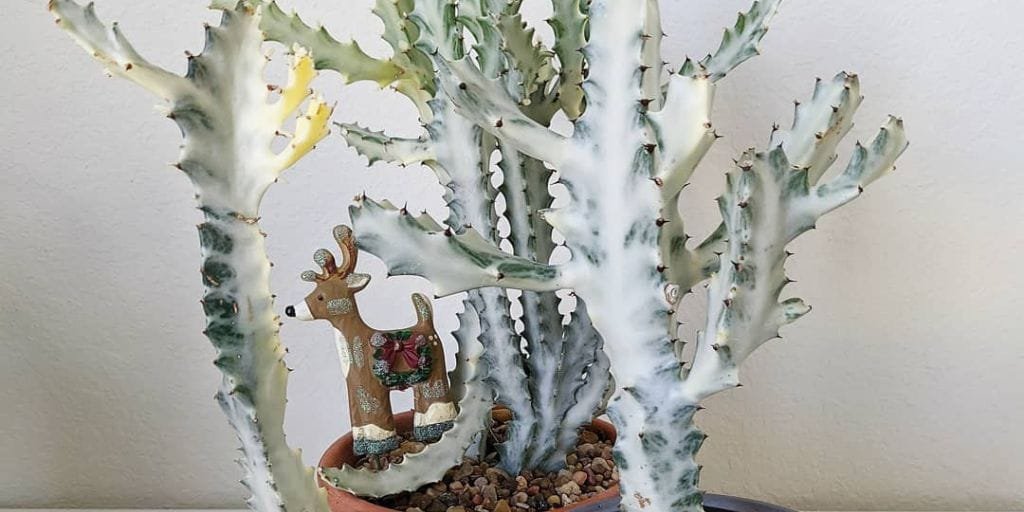
Euphorbia Lactea White or Ghost Cactus are amazing succulent plants for indoors. It is more inclined towards being a shrub. Its unique appearance is because of the lack of chlorophyll. Thus, giving it a whitish color. The name Ghost Cactus is also given to it because of its appearance. These white succulents also have pink, yellow, or green strikes on them. It is quite an attractive and unique plant.
- Scientific Name: Cristata Variegata
- Native: Asia
- Ideal Temperature: 21 to 30 °C during the day time and 10 °C during the night
- Average Size: 1 to 3 feet
- Sunlight: Bright indirect sunlight works the best
- Watering: Once every 7-10 days
Euphorbia Lactea White Ghost Cactus
Euphorbia Lactea, or Mottled spurge, looks like a leafless shrub, originating from Asia. Due to the lack of chlorophyll, it has a white, ghostly look, with a touch of slight pink, yellow, and sometimes green strokes. Its triangle-shaped stems hold the central attraction of your indoor too! Genus: Euphorbia Scientific Name: Euphorbia lactea ‘White Ghost’ Common Name: White Ghost Cactus, Ghost Euphorbia Temperature: 21-30°C Watering: Once a week Fertilization: Once a month. Lighting: Outdoor shade/Full sun Maintenance: Low Place: Both indoor and outdoor
String of Heart Variegated
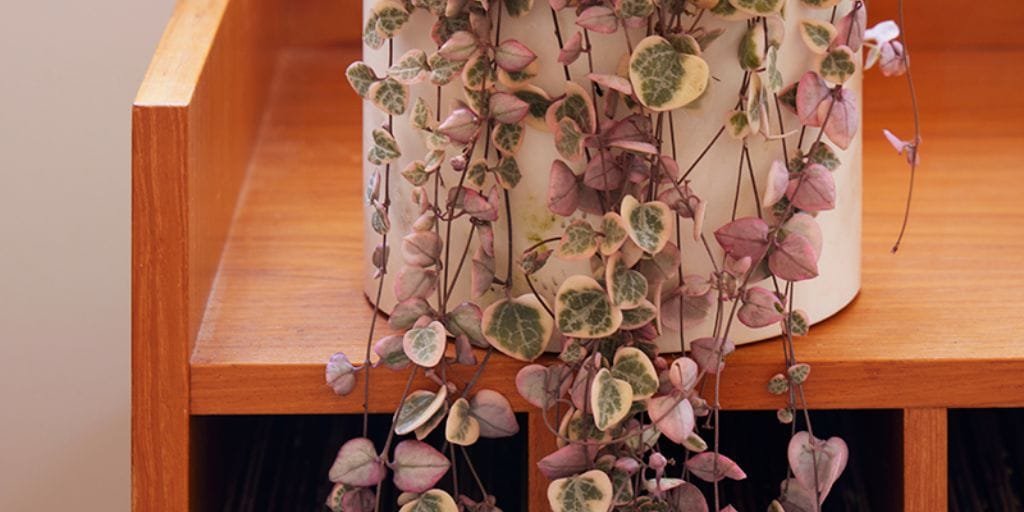
String of Heart Variegated is a tropical vining plant. It is quite a popular choice for indoor planters. These vining succulent plants have heart-shaped leaves that beautifully trail down the pot. The best spot to place it is either near the window side or balcony with some shade. These are flowering succulent plant that blooms pinkish trumpet-shaped flowers. The ideal season for the flowers is during summer and fall.
- Scientific Name: Ceropegia woodii variegated
- Native: Southern Africa (Zimbabwe to eastern South Africa)
- Ideal Temperature: 15 to 34 °C
- Average Size: 3 to 9 feet long
- Sunlight: Bright indirect sun rays
- Watering: Once or twice every one to two week
String of heart variegated
String of Heart Variegated is a Beautiful hanging plant for the balcony with heart-shaped leaves and vibrant variegation. Perfect for adding elegance and greenery.
Hoya Pubicalyx X Pink Silver
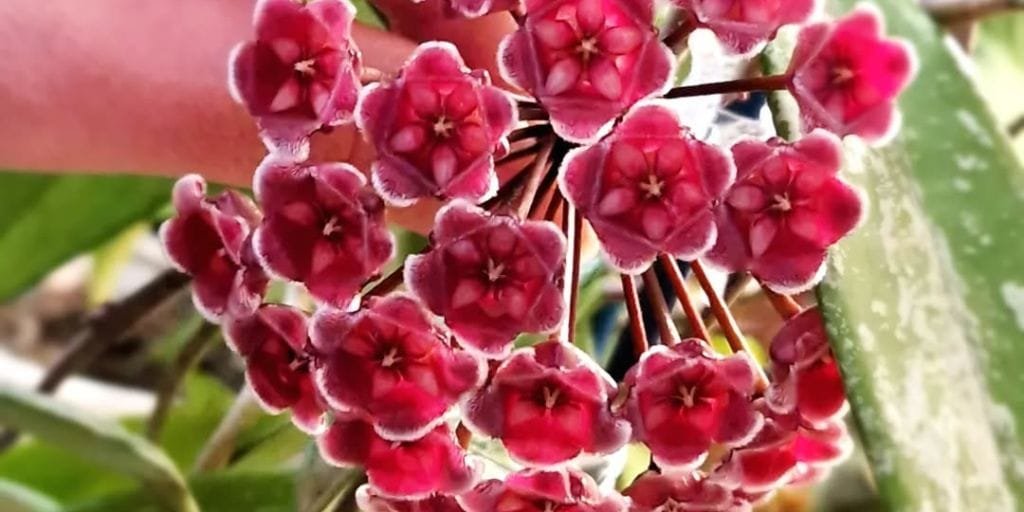
Hoya Pubicaly X Pink Silver is known by a wide range of names like Pink Silver, Silver Pink Vine, or Wax plant. These succulent plants have over 500 species. It is native to Asia and is quite adjustable with high humidity levels. It is a great handy plant. With pinkish star-like flowers, this plant has quite a demand in the market. The flowers bloom in clusters and look overwhelming when hunged on the balcony or window.
- Scientific Name: Hoya Pubicaly
- Native: Philippines
- Ideal Temperature: 16 to 29°C
- Average Size: 8-9 feet long
- Sunlight: 6 hours of indirect sunlight every day
- Watering: Once a week (check whether the soil is dry or not)
Hoya pubicaly X pink silver
Elevate your indoor space with Hoya pubicaly X pink silver, charming hanging plants. These are indoor creeper plants, bringing nature’s beauty indoors with ease.
Benefits of Having Succulent Plants Indoors
- Succulent plants help in improving air quality.
- It is effortless to maintain succulents. They don’t need often watering. Preferably watering is only required when the soil is dry or according to its routine.
- Succulent plants aid in humidifying the air. These plants release water and help to humidify the air.
- Plants like aloe have medicinal properties.
- Succulents can adjust themselves according to their surroundings. It can either be an indoor plant as well an outdoor plant.
- Succulent plants are major pests-free plants. Since regular watering is not ideal, it does not allow to build pests.
If you want plants and are worried about time, then succulent plants should be your priority. They are not only good-looking but come with a lot of undoubted benefits. If you want to grab great deals and offers with more such amazing plants, then kindly click on Plantzone.
FAQs
Why the name “succulent”?
Ans: The term succulent has come from the Latin word “sucus” meaning “juice” or “sap”. The name completely justifies the plants being fleshy and juicy inside.
Can we leave our succulent plants while we are traveling?
Ans: Succulent plants can thrive on their own because of the presence of water on their leaves. Before traveling you can pour some water. That water will be absorbed by the leaves and the plants use it for days. The moisture is intact in this process.
Why has my succulent plant turned yellow?
Ans: Turning the succulent plants yellow is a major sign of any underlying issue of the plant. A few reasons that may justify your concern are either watering the plant too often or too little. Absence of proper sunlighting, extreme cold, or often fluctuation of temperature. Or in extreme cases pests attack. Track your plant every day and detect the issues.
Do succulent plants bloom flowers?
Ans: Yes, succulents do bloom flowers during their season. Plants like String of Heart Variegated, Hoya Pubicaly X Pink Silver bloom flowers.
Are succulent plants fast or slow-growing plants?
Ans: Succulent plants are generally slow growers. Especially in the initial stage, their growth rate is super slow. But, after a few months, they start growing at a faster rate.
What kind of pot does succulents need?
Ans: It is suggested that the pots for succulent plants should be at least 10% wider than the plant. Shallow pots go well with them.





